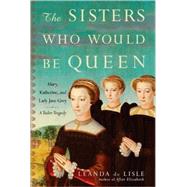
| List of Illustrations | p. xv |
| Family Trees | p. xviii |
| Prologue | p. xxvii |
| Educating Jane | |
| Beginning | p. 3 |
| First Lessons | p. 12 |
| Jane's Wardship | p. 21 |
| The Example of Catherine Parr | p. 30 |
| The Guardian's Fate | p. 41 |
| Northumberland's "Crew" | p. 51 |
| Bridling Jane | p. 61 |
| Jane and Mary | p. 69 |
| Queen and Martyr | |
| "No Poor Child"? | p. 81 |
| A Married Woman | p. 93 |
| Jane the Queen | p. 102 |
| A Prisoner in the Tower | p. 114 |
| A Fatal Revolt | p. 126 |
| Heirs to Elizabeth | |
| Aftermath | p. 143 |
| Growing Up | p. 156 |
| The Spanish Plot | p. 166 |
| Betrothal | p. 178 |
| A Knot of Secret Might | p. 189 |
| First Son | p. 200 |
| Parliament and Catherine's Claim | p. 211 |
| Hales's Tempest | p. 219 |
| Lost Love | |
| The Lady Mary and Mr. Keyes | p. 229 |
| The Clear Choice | p. 236 |
| While I Lived, Yours | p. 246 |
| The Last Sister | p. 251 |
| A Return to Elizabeth's Court | p. 260 |
| Katherine's Sons and the Death of Elizabeth | p. 268 |
| Standing at King Henry's Opened Tomb | p. 276 |
| Epilogue | p. 281 |
| Author's Note | p. 287 |
| Notes | p. 293 |
| Bibliography | p. 325 |
| Index | p. 337 |
| Table of Contents provided by Ingram. All Rights Reserved. |
The New copy of this book will include any supplemental materials advertised. Please check the title of the book to determine if it should include any access cards, study guides, lab manuals, CDs, etc.
The Used, Rental and eBook copies of this book are not guaranteed to include any supplemental materials. Typically, only the book itself is included. This is true even if the title states it includes any access cards, study guides, lab manuals, CDs, etc.
Excerpted from The Sisters Who Would Be Queen: The Tragedy of Katherine, Mary, and Lady Jane Grey by Leanda de Lisle
All rights reserved by the original copyright owners. Excerpts are provided for display purposes only and may not be reproduced, reprinted or distributed without the written permission of the publisher.